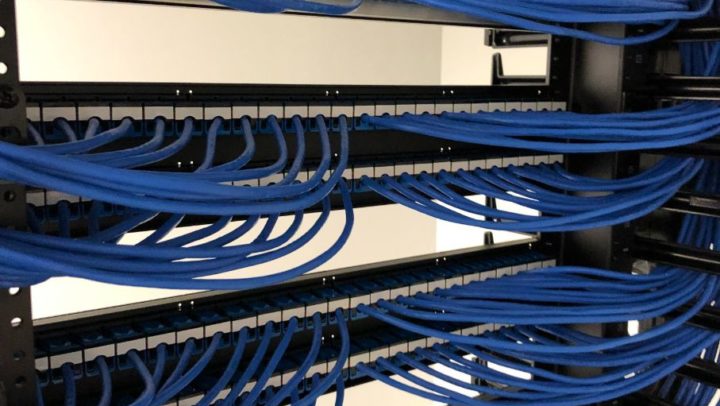Part 3 will cover the three methods – blowing, pulling, and pushing – for getting fiber cables from the basement to each floor as well as troubleshooting.
Blowing
Although blown fiber is a proven method, it may not always be best for an in-building deployment. Using a gas-powered compressor in the basement may not be appropriate. A developer may not permit the use of compressed air, which can carry water and dirt into buildings. However, blowing has the advantage of distance. Due to the fact blown fiber can have an installation distance up to 3,000 feet, it may be the only practical option for some high-rise buildings.
Pulling
Perhaps the biggest advantage of pullable cable is cost. This method needs a minimum of additional equipment and has been tried and tested in most regions. Unfortunately, it is labor-intensive unless there is already a pull cord. There are installation teams that prefer the cable-rodding approach, but there is a chance of overstressing the fiber optic cable. When tensile load becomes excessive during pulling, it can potentially damage the cable, along with objects along the cable’s path. Pulling has a maximum installation up to 1,500 feet.
Pushing
Affordable pushing equipment allows cables to be pushed a maximum of 984 feet. If fiber optic cable is pushed with pre-termination, the process is efficient and fast. However, hand-pushing cable is not as fast as the two other methods. In addition, fiber cable can only be pushed a maximum of 325 feet. Moreover, an older building might have poorly planned or congested conduits, making pushing cable more difficult.
Troubleshooting
In some older buildings, only PVC electrical conduits may have been installed. Conduits may also already be pre-populated with other kinds of infrastructure. Even though well-designed microduct paths may let a maximum of 325 feet of fiber cable to be pulled and/or pushed through them, a poorly planned or congested conduit may only be able to accommodate just 50 feet of cable inside it.
Part 4 will cover Fiber Cable to the Apartment or Office.
Progressive Office Cabling
Founded in 1986,
Progressive Office’s success has been a direct result of years of commitment to seeking cost-effective solutions. Working together, Progressive teams are committed to getting your data cabling, access control, and telecom systems installed and operating while minimizing disruption and downtime.
Call our toll free number (800) 614-4560 today.










